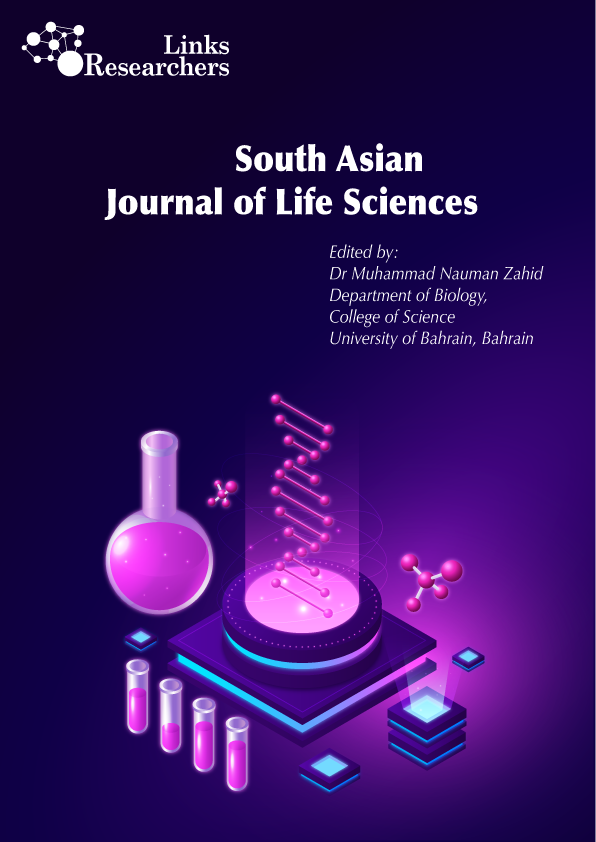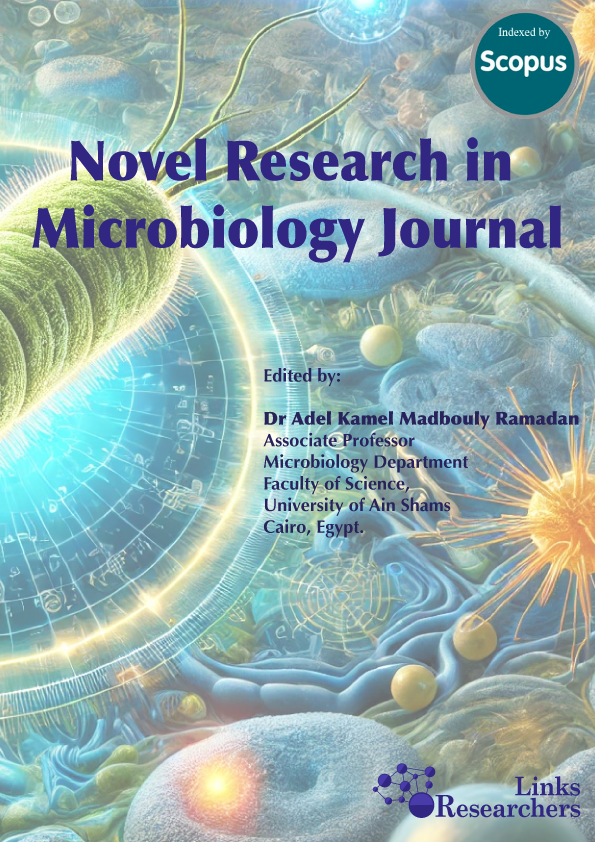Manzoor Hussain*, Miloslav Zouhar and Pavel Rysanek
Manzoor Hussain*, Miloslav Zouhar and Pavel Ryšánek
Manzoor Hussain*, Miloslav Zouhar and Pavel Ryšánek
Manzoor Hussain*, Miloslav Zouhar and Pavel Ryšánek
Rabeea Tariq*, Khalid Mahmood Qureshi*, Imran Hassan*, Muhammad Rasheed* and Usman Shaukat Qureshi*
Ishaq Ahmad*, Abdul Rehman**, Ehsan –Ul- Haq*** and Arif Mahmood****
Munazza Yousra1*, Sair Sarwar1, Muhammad Mahmood Ul Hassan1, Muhammad Zameer khan1, Abdul khaliq2, Shahbaz Ahmad1 and Shamim Ul Sibtain Shah3
Rahat Naz*, Mussawar Shah, Asad Ullah, Intikhab Alam and Younas Khan
Muhammad Usman Ghazanfar1, Waqas Raza1*, Waqas Wakil2,3, Imtiaz Hussain4 and Misbah Iqbal Qamar1
Muhammad Medrar Hussain*, Asad Jan* and Sayyar Khan Kazi
Samman Gul Vaseer1, Muhammad Rasheed1*, Muhammad Ansar1, Yamin Bibi2, Saqlain Shah1, Asma Hassan1, Lubna Ayub Durani1, Muhmmad Asif3 and Zuhair Husnain1
 conducted to evaluate the effect of Co on inoculation slurry treated seeds of mung bean (Vigna radiata L.) to observe th...
conducted to evaluate the effect of Co on inoculation slurry treated seeds of mung bean (Vigna radiata L.) to observe th... Ahmad Khan1*, Raza Ullah Khan1, Sadia Khan2, Muhammad Zameer Khan1 and Fayyaz Hussain1
Rana Shahzad Noor1,2*, Fiaz Hussain2, Muhammad Umair2, Waqas Aslam2, Muhammad Ameen4, Muhammad Adnan Islam3 and Muhammad Sheraz2
Abdul Raqeeb1,3, Syed Moazzam Nizami2,4*, Aamir Saleem3, Lubna Ansari3, Saeed Gulzar3, Basit Ali3, Masooma Saleem5
K. Abbasi 1 , R. Wick2† and D. Zafari1
Faisal Shabbir*, Naeem Ejaz*, Daulat Khan**, Naveed Ahmad*, Jawad Hussain*, Muhammad Fiaz Tahir*
contains about 12% cement. The world’s annual production of cement is 1.6 billion tons which accounts for about
7% emission of carbon dioxide gas in atmosphere. Concrete industry is consuming large amount of natural resources
(gravel, sand, fine rock, water etc). In order to address such environmental issues related to cement manufacturing
there is dire need of rep...
Haiyan Yang1, Hongxia Liu1, Wenlong Wu1*, Weilin Li2 and Lianfei Lyu1
Ashraf Ismail Afia1 and Ahmed Soliman Mohmed El-Nuby2*
Noor Ayaz1*, Faiza Aman1, Sidra Saleem1*, Maqbool Rehman1 and Muhammad Fahim2
Saleem Maseeh Bhatti1*, Aslam Khan Gadehi1, Inayatullah Rajpar1, Muhammad Nawaz Kandhro2, Mukesh Kumar Soothar1 and Zohaib Ur Rehman Bughio1
Shujaa Arshad1, Muhammad Umair1*, Rana Shahzad Noor1, Chaudhry Arslan2, Arslan Afzal1 and Zafar Islam3
Habiba ur Rehman, Muhammad Usman Ghazanfar and Waqas Raza
Samah A. Mokbel1, Ashraf A. Abd El-Mohsen2
Ahmed K. El-Attar; Samah A. Mokbel; Ali H. Hamed
K.A. El-Dougdoug1, A.R. Sofy2, A.A. Mousa2 and E.E. Refaey2
Samah A. Mokbel, Soad H. Taha, Mahmoud M. Abd-El Hamid, Ali H. Hamed
Manal A. El-Shazly1. M. I .Kobeasy2and Sarah H . Altalhi3
Shimaa A. Khalaf1 , Mohsen M. Elsharkawy2, Samir A. Sidaros2, Shawky A. El Kewey2, Ayman F. Omar2, Ali Hamed1
Muhammad Rafique1, Muhammad Azhar Iqbal2, Inam Ul Haq1*, Muhammad Ramzan Anser2, Humara Umar2 and Muhammad Ashraf Sumrah2
Muhammad Madni Afzal1*, Shahbaz Talib Sahi1, Amer Habib1, Waqas Ashraf2, Muhammad Ahmad Zeshan3, Muhammad Raheel2 and Qaiser Shakeel2
Salma Javed1* and Daniyal Siddiq2
Mohammed Abdel-Mageed Abdel-Aziz Abdel-Mageed1, Eman Alsayed Hammad2*, Nashaat Abdel-Aziz Mahmoud1 and Anas Farag El-Mesalamy1
Atef El-Sagheer1*, Anas El-Mesalamy1, Abdel-Monem Anany2 and Nashaat Mahmoud1
Mazhar Ullah and Mohammad Sayyar Khan*
Samreen Khan*, Salma Javed, Tabassum Ara Khanum, Nasira Kazi
Vahid Mollasadeghi1,2* and Samaneh Elyasi1,2
Kashifa Naghma Waheed*, Tariq Rashid, Sikender Hayat, Muhammad Azeem and Sajid Ali Naqvi
Doaa Khairy1, Mohamed Ali Osman2 and Fatma Abdel Mohsen Mostafa1*
Eman Alsayed Hammad and Atef Mohamed El-Sagheer
Muhammad Anwar Ul Haq1*, Tariq Mukhtar1, Muhammad Inam-ul-Haq1 and Azeem Khalid2
Eman Alsayed Hammad1* and Mahmoud Mohamed Hassanin Hasanin2
Ghalib Ayaz Kachelo1, Nasir Ahmed Rajput1*, Muhammad Atiq1, Shahbaz Talib Sahi1, Nasir Ahmad Khan1, Akhtar Hameed2, Noor Muhammad1 and Muhammad Saqib Mushtaq1
Yasemin Yıldırım Meşepınar and İlker Kepenekci*
Hanaa H.A. Gomaa1*, Dalia Y.Z. Amin1, Mona A. Ismail1 and Khalid A. El-Dougdoug2
Inam Ul Haq1*, Humara Umar1, Farah Umar2, Naeem Akhtar3 and Muhammad Jan4
Nourhan M.M. Hassnin, Ali H.H. Ali and Hosny H. Kesba*
A. Ghasemzadeh1, S. Jamali1†, M. Esfahani2 and H. Pedramfar1
Hira Anwar1, Muhammad Jabran1,3, Anam Moosa2, Usman Arshad2, Abdul Haseeb1, Abdul Jabbar1, Muhammad Burhan4, Amjad Abbas1, Muhammad Naveed5 and Muhammad Amjad Ali1*
M. S. Bajestani1, K. Dolatabadi2†, E. Mahdikhani-Moghadam1
M. A. Radwan†, M. M. Abu-Elamayem, S. A. A. Farrag and N. S. Ahmed
I. K. A. Ibrahim1, M. A. EL-Saedy2, S. F. A. Awd-Allah3 and Z. A. Handoo4, †
M. T. Javeed†, A. S. Al-Hazmi and Y. Y. Molan
Fawzia, I. Moursy1, Amira, Sh.Soliman1, A. E.M. Khalil2,Samaa, M. Shawky2 and A. A. Taher2 †
I.K.A. Ibrahim1 and Z. A. Handoo2†
N. Hajra, F. Shahina1, †, K. Firoza1 and R. Maria
M.A.M. El-Saedy, A.A. Mokbel*† and S.E. Hammad**
A.W. Amin† and A.W. Mona*
F. Toumi†*,**, L. Waeyenberge*, R. Yousef***, H. Khalil****, K. Al-Assas*** and M. Moens*,**
A.A. Anter, A.W. Amin†, A.H. Ashoub* and A.S. El-Nuby*
A.W. Amin†, A.A. Anter, A.H. Ashoub* and A.S. El-Nuby*
A.W. Amin, Abd-El Wanis, Mona, A. Rahman and Tomader
Ovirup Bhushan Paul1, Shodipta Sharma Urmi2, Md. Ashraf Ali Biswas3*
ZAHOOR AHMAD SAJID1* & SHEZA AYAZ KHILJI2
Salim Saifullah1*, Tasmina Kanwal2 and Khadija Rehman2
Shiferaw Demissie Tola1, Diriba Muleta2, Fassil Assefa2 and Beira Hailu Meressa1*
Nusirat Aderinsola Sadiku1, Oluwatoyin Adenike Fabiyi2* and Tesleem Taye Bello3
Elbeshehy, E. K.F. and Sallaml, A.A.A.
Sabry Y. M. Mahmoud; Maher H. Hosseny and Mamdouh H. Abdel-Ghaffar
Muhammad Adnan1*, Muhammad Nauman Khan2,3, Barkat Ullah2, Faisal Zaman2, Alevcan Kaplan4, Hubert O. Dossou-Yovo5, Sajid Ali Khan Bangash6, Sana Wahab7, Mehreen Ghazal8 and Muhammad Hassan Sarfraz9
K...
Hafiz Muhammad Usama Shaheen1, Nasir Ahmed Rajput1*, Muhammad Atiq1, Ghalib Ayaz Kachelo1, Hadeed Ahmad1, Muhammad Wahab1, Muhammad Faran Tahir1 and Abuzar Hasnain2
Yaowu Zhan, Dandan Su*, Jinxiu Bai, Fang Li and Yulian Dong
Atyab Amjad1*, Riaz-Ur-Rehman1, Muhammad Shafique Khalid2, Samia Ikram1, Riaz Bukhari1, Muhammad Shafique3 and Muhammad Luqman4
Muhammad Ardas Daruslam1, Muhammad Irfan Said2*, Nancy Lahay3
Marwa M. El-Deriny1,2*, Rania H. Wahdan1, Marwa S. Fouad3 and Dina S.S. Ibrahim1,2*
Masoumeh Hosseynikhah
Abdessatar Omezine1
Bilal Ahmed1, Faheem Ahmed Khan2, Nuruliarizki Shinta Pandupuspitasari1*, Muhammad Rizwan Yousaf1 and Asep Setiaji1
Md Kamrul Hasan1,2, Hong-Seok Mun1,3, Keiven Mark Bigtasin Ampode1,4, Eddiemar Baguio Lagua1,5, Hae-Rang Park1,5, Young-Hwa Kim6, Md Sharifuzzaman1,7, Chul-Ju Yang1,5*
Wan Nurfarzana Wan Mohamad Zani1, Norrizah Jaafar Sidik1*, Asmah Awal2, Nurul Izzati Osman3, Lyena Watty Zuraine Ahmad1 and Mohd Khairi Nordin4
Eman Abdelrazik1, Sahar H. Abdel-Baset2*, Abdelghafar M. Abu-Elsaoud3,4 and Shimaa M.A. Mohamed5
Ahmed M.F.A
Abdelhak Rhouma 1 Ibtissem Ben Salem 1 Mahmoud M’Hamdi 2 Naima Boughalleb-M’Hamdi 1
Ibtissem Ben Salem1; Yosra Abdelkhalek1; Houssem Nabli3; Neji Tarchoun2; Naima Boughalleb-M’Hamdi1*
Muhammad Usman Akhtar1*; Abid Ali Khan1; Wajeeha Jahangir Khan1; Tiyyaba Furqan1
Mahalakshmi, G.1; Vengadeshkumar, L.1*; Rajamohan, K.1; Sanjaygandhi, S.1; Sharmila, A.M.1
Ali, A.A.M.1*; Hassanin, M.M.H.2; Abdel-Rahman, T.F.M.2; Mergawy, M.M.3
Michael E. Nkereuwem1,2*; O. Fagbola2; Iniobong E. Okon3; Ini D. Edem4; Adeniyi O. Adeleye5; Victor O.
Onokebhagbe1
Yasmine Abdallah; Ranya M. El-Ashmony; Abdelrazek S. Abdelrhim*
Alaa Fathalla Mohammed
Abdulnabi A. A. Matrood1; Abdelhak Rhouma2*
Sabrine Mannai1*; Naima Boughalleb-M‟Hamdi1
Simiat O. Jimoh*; Semirah A. Sanusi; Farouq A. Olaogun; Ramot B. Badmos-Oladapo; Kifayat O. Asafa- Adedimeji
Sherin P. Mekhail1; Marwa S. Fouad2*
Belal Natey1; Ahmed M.M.A. Kasem1; Younes M. Rashad2*; Nageh Fathy Abo-Dahab1
Herrera-Torres Esperanza1, Araiza-Rosales Esther2, Sierra-Franco Daniel3, Ortiz-Robledo Faviola1, Aguirre-Calderón Carlos3, Pámanes-Carrasco Gerardo4*
Muhammad Usman Akhtar1*; Abid Ali Khan1; Wajeeha Jahangir Khan1; Tiyyaba Furqan1
challenges of a global concern, thus it is imperious to explore new sustainable ways to overwhelm these
challenges. The need of a new sustainable energy sources has increased the importance of the third generation
biofuel produced from non-food stocks such as algae, which possibly represent a great opportunity in the long
term. The major challenge of the algae based bio-fuel prod...
Featuring
-
Investigating the Bioactive Potential of Ononis spinosa L. Phytochemical Profiling and Antibacterial Effectiveness Evaluation
Lakhdar Benalach, Fadhela Boukada, Kouider Cherifi, Ali Latreche, Ikram Messellem and Mohammed Bellatreche
Novel Research in Microbiology Journal, Vol. 9, Iss. 2, pp. 82-91
-
Bioactivity of the Endophytic Bacteria Inhabiting the Egyptian Medicinal Plant Hyoscyamus muticus
Noura Sh. A. Hagaggi, Marwa E.A. Khalaf and Eman A. El Rady
Novel Research in Microbiology Journal, Vol. 9, Iss. 2, pp. 51-62
-
Predicting the Potential of Black Seed Bioactive Compounds against Potato Virus X Using In Silico Molecular Docking
Adham Ezz El-Regal Mahmoud, Atef Shoukry Sadik and Ahmed Mahdy
Novel Research in Microbiology Journal, Vol. 9, Iss. 2, pp. 63-81
Subscribe Today
Receive free updates on new articles, opportunities and benefits

© 2025 ResearchersLinks. All rights Reserved. ResearchersLinks is a member of CrossRef, CrossMark, iThenticate.


















